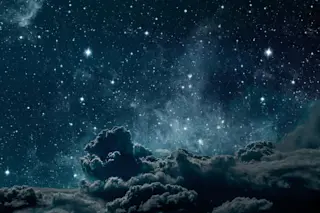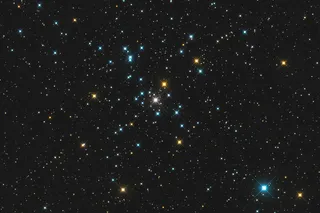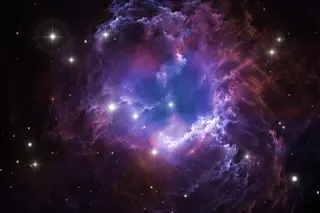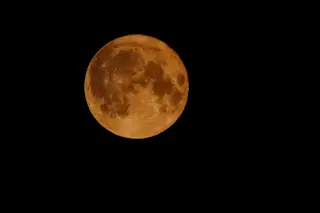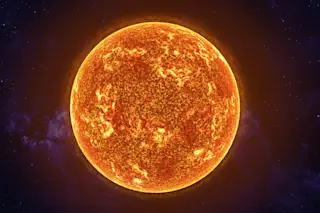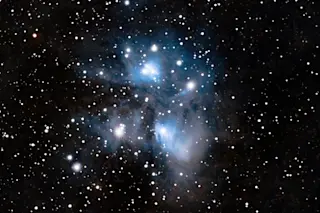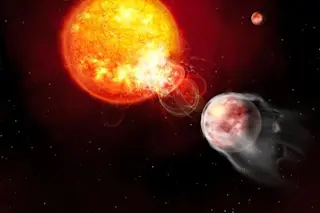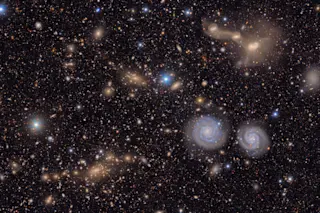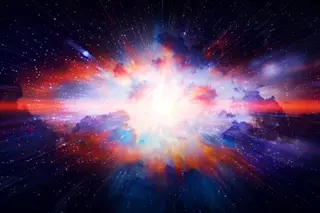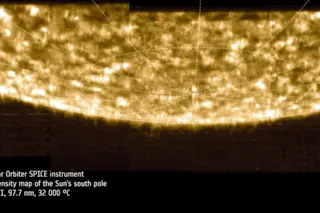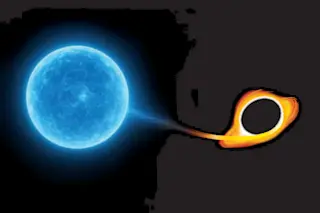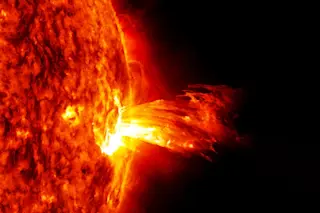All but one of the giant balls of hydrogen and helium known as stars, appear to us on Earth as pinpricks of light filling the night sky. Astronomers well understand the nature of these objects, how they are powered by the process of fusion and how they evolve over their lifetimes of several billion years.
But recently, astrophysicists have suggested that the first stars could have been quite different. Instead of fusion power, these objects may have been heated by the annihilation of dark matter.
So-called Dark Stars would be hugely different to the stars we see today. But they have never been seen, not least because the universe’s earliest light is too dim and distant to be observed.
But the James Webb Space Telescope, by far the world’s most powerful telescope, is sensitive enough to detect light from galaxies that formed just a few hundred million years after the Big Bang. Indeed, a program called the JWST Advanced Deep Extragalactic Survey (JADES) has already found numerous examples.
Star Power
Now Cosmin Ilie at Colgate University in New York, and colleagues, say that some of these objects may not be galaxies at all but supermassive Dark Stars instead. If so, the JWST will have gathered the first evidence of the existence of these exotic objects in the early universe.
First some background. Current theories of cosmology suggest that the universe is filled with far more dark matter than the visible matter we can see. This dark stuff has a significant gravitational effect on the stuff we can see.
The Big Bang did not distribute all this stuff evenly but in clumps. Because visible matter is in the minority, it has always collected around the much bigger clumps of dark matter because of its gravitational attraction. That’s how the first galaxies formed.
Nobody knows the nature of dark matter but one theory is that it is its own antiparticle. So when two dark matter particles collide, they annihilate, heating up any visible matter nearby.
Ilie and co say that this annihilation process would have had significant consequences for star formation. Visible matter heated in this way would have been diffuse and unable to collapse to form visible stars. And the heating would have happened on an enormous scale. Ilie and co say Dark Stars could have been a million times more massive than the Sun and ten billion times brighter but significantly cooler.
If they exist, supermassive Dark Stars ought to be visible to the JWST. Now Ilie and co say that the JADES program has found several objects of interest. “JADES-GS-z13-0, JADES-GS-z12-0, and JADES-GS-z11-0 are consistent with a Supermassive Dark Star interpretation, thus identifying, for the first time, Dark Star candidates,” say the researchers.
That will focus intense attention on these objects and more evidence is desperately needed. An important factor is that the JWST cannot see individual conventional stars from that period, only galaxies of them. By contrast, the JWST can see single Dark Stars because they are much larger and brighter.
Light Fantastic
So a key question is what is the difference between the light produced by an early galaxy of conventional stars and by a single supermassive Dark Star.
One possibility is that Dark Stars are not hot enough to emit certain helium spectral lines. So their spectra are likely to contain absorption lines rather than emissions lines. By contrast, an early galaxy is likely to contain both cool helium gas and hot helium inside stars and so should exhibit both absorption and emission lines.
So the task for the near future is to better study the spectral characteristics of JADES-GS-z13-0, JADES-GS-z12-0, and JADES-GS-z11-0.
One thing seems clear: there are probably no supermassive Dark Stars left now. Astronomers think that when large scale dark matter annihilation ended, Dark Stars cooled rapidly and their gigantic mass caused them to collapse to form supermassive black holes.
Indeed, that may be why most galaxies seem to have a supermassive black hole at their heart, including ours. So the remnants of a supermassive Dark Star that lived and died some 14 billion years ago may not be so far away us now—if it turns out they really did exist in the early universe.
Ref: Supermassive Dark Star candidates seen by JWST? : arxiv.org/abs/2304.01173


